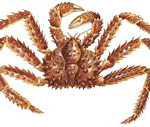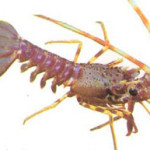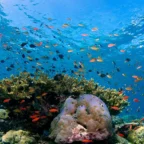
Cancer pagurus
The common edible crab (Cancer pagurus) leads a benthic (bottom dwelling) existence living on a wide range rocky substrates, bottoms of sand or gravel and at depths from 6 to100 metres, although between 6 and 30 metres is more typical. The species is distributed from northern Morocco to northern Norway at latitude 70 degrees. It has a heavy, broadly oval shaped body, which is rather convex with very faint grooves. The edible crab is readily distinguished from
other species by the round lobes at the front of the carapace giving a ‘piecrust’ effect and the presence of massive black tipped chelae (pincers). The pincers are smooth and slightly unequal in shape. The last four pairs of legs are roughened by numerous groups of very short stiff black hairs. The carapace is reddish-brown in colour, with a yellow-white colouration on the underside.
Very large, older specimens can have carapace width of up to 25 cm, although 15 cm is more typical. Females have a broader posterior flap on the underside, in which they carry up to two million eggs for seven to eight months. When the larvae hatch, they are pelagic during the first few months, and the great majority is eaten or dies before the few survivors settle on the sea floor. Edible crabs do not reach maturity until they are five or six years old.
Crabs are scavengers ready to take advantage of any detritus, but they also feed on molluscs and mussels, which they crush with their large claws.









Social Profiles